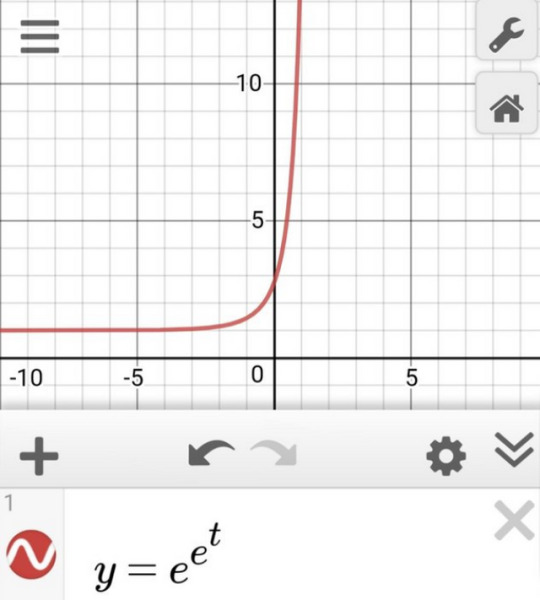Note
Is there a way to memorize the unit circle without having to actually stare at it for hours? Like a mnemonic of some sort?
you can use your hand, but i just memorized the circle when i learned it. you’ll see after a while that the sin, cos, and tan values only take on a set number of values. they just change signs and angles each quadrant
2 notes
·
View notes
Note
How can you tell the difference between a cusp and a corner?
https://math.stackexchange.com/questions/2429089/cusp-vs-corner-or-both
2 notes
·
View notes
Note
If the derivative of y=kx, where k is a constant, equals 4 when x=-1. What is the derivative of y=k (1-sqrt(x)) when x=4?
y = kx
dy/dx = k = 4
k = 4
y = k(1-sqrt(x)) = 4(1-sqrt(x)) = 4 - 4*x^(1/2)
dy/dx = 0 - 4*(1/2)*x^(-1/2) = -2/sqrt(x)
dy/dx(4) = -2/sqrt(4) = -2/2 = -1
3 notes
·
View notes
Photo

I got this wrong on a test, and I was wondering how you would do it.
f(3+delx) = 5*(3+delx) = 15+5delx
f(3) = 5*3 = 15
lim as delx goes to 0 of [f(3+delx)-f(3)]/delx =
lim as delx goes to 0 of [15+5delx-15]/delx =
lim as delx goes to 0 of 5*delx/delx =
5*( lim as delx goes to 0 of delx/delx) =
5*1 = 5
3 notes
·
View notes
Note
dx/x sqrt 25x^2+16
d/dx[sqrt(25x^2+16)]
= d/dx[(25x^2+16)^(1/2)]
= (1/2)*(25x^2+16)^(-1/2)*(2)*(25x) = 25x/(sqrt(25x^2+16))
2 notes
·
View notes
Note
Your dedication to help people is admirable! Thank you for taking time from your busy schedule to help us! I'm someone who, sadly, failed at math, but i never stopped seeing the beauty in it. It's very interesting, and i have much respect for people who deal with it.
thanks! ik i havent really been helping out a lot recently so im sorry for that. i stopped taking math courses as part of my curriculum (im an engineer) and im really focused on research lately. hope the blog still helps ppl!
2 notes
·
View notes
Note
can u help me with this ? in an isosceles triangle PQR , PQ = (3x + y) cm and QR = (5y - x) cm . If PR = QR , find the perimeter , in cm , of the triangle PQR . thanks x
Perimeter = PQ + QR + PR = (3x+y) + (5y-x) + (5y-x) = (11y+x) cm
6 notes
·
View notes
Photo

Hello agaaaain. Is this correct? :)
yep it’s correct! good job!
14 notes
·
View notes
Photo

I NEED YOUR HELP ONCE AGAIN :(


30 notes
·
View notes
Photo

Am i going to the right way? Tysm.
@sempre-felice Your process is right, but you messed up the integral a little bit. Yes, I would expand the integral and separate it out, but you don't need u substitution and (e^x)^2 = (e^x)(e^x) = e ^(x+x) = e^(2x) not e^(x^2) So integral (e^x + 1)^2 dx = integral (e^(2x) + 2e^(x) + 1) dx = integral (e^(2x))dx + integral (2e^(x))dx + integral 1 dx = (e^(2x)/2) + (2e^(x)) + x + C
4 notes
·
View notes


















